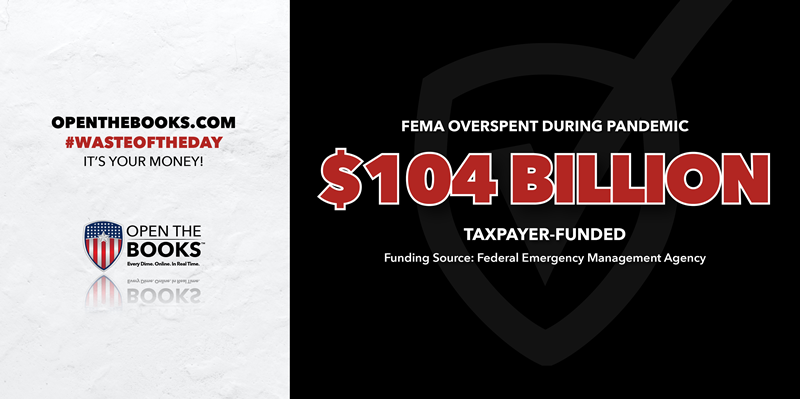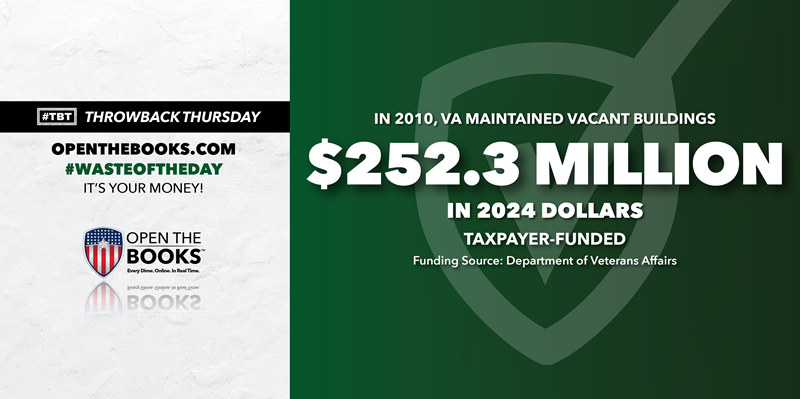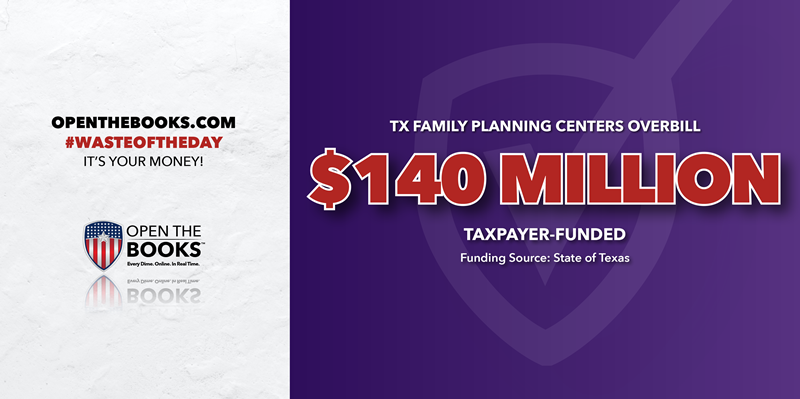
Memphis Scammed Out of $773,000
August 5, 2024

Topline: The City of Memphis, Tennessee was defrauded of $773,000 in a phishing scam in 2022. Taxpayers are just finding out now because former Mayor Jim Strickland’s administration kept the information from the public.
Key facts: An online scammer pretending to be city vendor Zellner Construction asked a Memphis accounts payable employee to wire $773,695.45 to a private bank account in February 2022. A spokesperson told WREG that the city was operating under COVID-19 protocols that “relaxed” the procedures for wiring money.
Once the city realized the mistake, it was too late to retrieve the cash, the spokesperson said.
The scam was revealed when a city councilman mentioned it during a public meeting this June, and officials confirmed the details to several news outlets on July 17 — over two years after the incident.
Memphis spent $40.1 million on its contracts with Zellner Construction between 2020 and 2022, according to records at OpenTheBooks.com.
Search all federal, state and local government salaries and vendor spending with the AI search bot, Benjamin, at OpenTheBooks.com.
Critical quote: City Councilwoman Jerri Green, who was elected after the incident took place, told WREG, “We have to make sure we are taking care of the taxpayers' dollars. That’s our number one job, is to be good stewards of their funds. To learn we’ve been taken advantage of in some way is very disturbing.”
Supporting quote: “These scams are very sophisticated and ever evolving,” said financial officer Walter Person. “After discovery of this incident in early 2022, we returned to our pre-COVID protocols, including verifying the proper notary indicia, telephonic verification of multiple data points for all wire transfers, and periodic phishing scam training sessions with our I-T security team.”
Background: Memphis spent over $947 million paying almost 11,200 outside vendors in 2022.
Only 216 of those payments were for more than $773,000, the amount lost to the phishing scam. Any of the other transactions could have been paid for with the stolen money.
Summary: Most taxpayers can spot an online scam when they see one. City financial officers should be a bit more perceptive — and at least be transparent with the public when they are not.
Disaster Relief Fund in Danger After $104 Billion COVID Spending
August 6, 2024

Topline: The Federal Emergency Management Agency greatly underestimated how much money it needed to spend on the COVID-19 pandemic and now might not have enough funds to address future disasters, according to the Government Accountability Office.
Key facts: FEMA predicted in early 2020 that it would spend $17.6 billion on pandemic programs, but officials say that estimate was “blown out of the water” by the actual price tag. FEMA has already spent $103.6 billion on pandemic aid and expects the total to reach $171.6 billion by August 2026. But lawmakers have only provided $97 billion in supplemental funding because Congressional budgets were written based on FEMA’s incorrect estimates. The goal is for estimates to be within 10% of FEMA’s actual spending, but that hasn’t happened since 2021.
That’s already posed issues for FEMA. Its Disaster Relief Fund had such a low balance in August 2023 that officials had to pause all spending that was not “essential for lifesaving or life-sustaining activities” for two months, leading to delays in funding for local governments, according to the GAO.
Yet FEMA continues to approve new expenses related to COVID-19, even though the public health emergency ended on May 11, 2023. Officials are still reviewing grant applications submitted before a November 2023 deadline and allowed 67 other projects to submit applications after the deadline.
Search all federal, state and local government salaries and vendor spending with the AI search bot, Benjamin, at OpenTheBooks.com.
Background: The Disaster Relief Fund is normally used to support state and local governments and individual families after hurricanes, earthquakes or other catastrophes.
The pandemic was the first time it was used for a public health emergency, and it ended up being the most expensive event in at least 32 years, according to the Congressional Budget Office. Between 1992 and 2021, 20% of all disaster funding went toward COVID-19 programs.
FEMA sent money to state governments to provide medical care and distribute protective equipment like masks. The agency also reimbursed families up to $9,000 for funeral expenses, $300 to $400 per week for lost wages, and paid for “crisis counseling” to combat the “psychological effects” of the pandemic.
Critical quote: FEMA officials disagreed with the GAO’s recommendation that they review their mistakes to prepare for future emergencies. The agency “does not plan to assess or change the overall estimation process for declared catastrophic disasters based on its experience with COVID-19” because “they do not expect another pandemic to occur.”
Summary: Pretty soon, the biggest “disaster” facing FEMA may be its inability to manage its budget properly.
NYC Spent $350,000 on Study, Mismanaged Preschool Program Anyway
August 7, 2024

Topline: New York City’s universal preschool program wasn’t so universal this year, as thousands of three-year-olds were denied a seat.
That’s partially because a $350,000 study to determine which neighborhoods had the highest demand for preschools is filled with inaccurate data and is missing other important data, according to the education news site Chalkbeat.
Key facts: Mayor Eric Adams justified budget cuts to the city’s preschool program by saying there were too many unfilled seats and hired consultants at Accenture to fix it. But the 37-page report reviewed by Chalkbeat doesn’t offer any specific info on which schools have too many seats and which have too few.
The report also made recommendations to the city based on projections showing that over 54,000 students would apply for preschool. The actual number was 27% lower.
The study began in March 2023, but the city did not release the results to journalists or city council members until this July, months after parents received admissions offers for their toddlers. The Department of Education says the rest of the study is still ongoing.
Rita Joseph, the head of the City Council education committee, gave a simple statement to Chalkbeat: “I would try to get a refund.”
It’s a stunning case of mismanagement. This year, 43,000 families applied for 52,000 preschool seats, but over 2,500 children were rejected because they lived nowhere near the schools with open spots, according to nonprofit newsroom The City. Others were only offered enrollment in preschools miles away from their home.
The Department of Education is working to find seats for the rejected students. The city is also planning a $5 million advertising campaign about free preschool, even though existing applicants are being turned away.
Background: Wacky studies are nothing new for New York. The city recently completed research on the effectiveness of trash cans and will hire scientists to figure out why commuters don’t want to pay subway fares.
The $350,000 preschool study stands out because Adams has consistently cut funding for universal preschool. He’s slashed the budget by $400 million since 2022 and wants another 16% reduction next year.
Meanwhile, the city is late with payments to its preschool providers, owing hundreds of them over $400 million as of early last year — leading Bloomberg Businessweek to declare that the program is “dying.”
Search all federal, state and local government salaries and vendor spending with the AI search bot, Benjamin, at OpenTheBooks.com.
Critical quote: “I am flabbergasted that we’ve been waiting a year and a half for this,” Councilman Lincoln Restler told Chalkbeat when the study was released. “It does not take a rocket scientist to figure out where the applications are coming from and where to connect students and families with seats.”
Summary: If New York is going to reduce its preschool spending, it needs to make sure the money it does allocate is spent efficiently.
Throwback Thursday: In 2010, Veterans Affairs Monkeyed Around with Cash
August 8, 2024

Throwback Thursday!
Topline: While tens of thousands of our nation’s soldiers were serving in Afghanistan, the Department of Veterans Affairs was spending money on a deserted monkey house and hundreds of other vacant buildings.
The Government Accountability Office said the VA spent $175 million in 2010 — $252.3 million in today’s money — on maintenance at unused buildings, including a pink, octagonal monkey house used for storage in Dayton, Ohio.
The VA claimed it was only $34 million, but either way it’s money that should have been used to more directly support combat veterans.
That’s according to the “Wastebook” reporting published by the late U.S. Senator Dr. Tom Coburn. For years, these reports shined a white-hot spotlight on federal frauds and taxpayer abuses.
Coburn, the legendary U.S. Senator from Oklahoma, earned the nickname "Dr. No" by stopping thousands of pork-barrel projects using the Senate rules. Projects that he couldn't stop, Coburn included in his oversight reports.
Coburn's Wastebook 2010 included 100 examples of outrageous spending worth more than $11.5 billion, including the money spent on abandoned VA facilities.
Search all federal, state and local government salaries and vendor spending with the AI search bot, Benjamin, at OpenTheBooks.com.
Key facts: FOX News reported in 2010 that 314 of the VA’s 5,507 buildings were completely abandoned.
Reporters visited sites around the country and found rats, fungus, “barrels of unidentified chemicals” and more.
The Edward Hines Jr. VA Medical Center outside Chicago, which the VA spent $20,000 per year to maintain, had been empty for 15 years and was flooded with chemical-laced water.
Complex federal rules made it difficult for the VA to sell the buildings, which were meant for housing, psychological support and more for veterans. They were supposedly too expensive to demolish.
Outsiders thought the properties could be put to better use.
"You got dormant buildings? You want to give them away? Refurbish them! Use them!" Larry Van Kurant, a spokesman for Veterans of Foreign Wars, told FOX News.
Summary: It took the VA until 2017 to announce that it would demolish or restore all of its unused buildings. It appears that no one has quantified the total amount of money wasted in the years before then.
Texas Pregnancy Centers Get $140 Million That May Not Reach Families
August 9, 2024

Topline: A Texas program meant to help families navigate unplanned pregnancies “has few safeguards and is riddled with waste,” according to an investigation by ProPublica and CBS News. Contractors have, for example, billed the state $14 for supplies costing pennies, used state funds to grow hemp, and more.
Key facts: The “Thriving Texas Families” program — renamed from “Alternatives to Abortion” after Roe v. Wade was overturned — pays contractors to provide parenting classes and items such as diapers and baby formula to families. Annual funding gradually rose from $5 million in 2005 to $140 million last year.
The contractors can bill the state $14 any time they distribute parenting supplies, regardless of what those supplies actually cost. The fee often pays for pregnancy centers to give out “a couple of paper pamphlets” or packs of diapers that cost them 25 cents.
Parents must take a class before receiving supplies, which nets the pregnancy centers another $30 an hour from the state.
ProPublica says taxpayers have spent $54 million for McAllen Pregnancy Center and other Texas Pregnancy Care Network subcontractors to give out baby supplies, but the state doesn’t track what supplies the money is buying. Some of it was for necessities like formula, but some of it was paper pamphlets.
There are no requirements for how the state grants must be spent. San Antonio-based A New Life for a New Generation used state funding to run its owner’s smoke shop and to buy land that was later used to grow industrial hemp, KSAT-TVreported.
McAllen Pregnancy Center received $3.5 million in three years from taxpayers but spent less than $1 million on programming. Its assets increased by $2.1 million in the same timeframe, ProPublica found.
Those obvious examples of misused money still weren’t enough for the state to conduct a full audit of Thriving Texas Families. ProPublica says Texas has “never thoroughly evaluated the effectiveness of the program’s services in its nearly 20 years of existence.”
The largest contractor, Texas Pregnancy Care Network, only met one of its three benchmarks for success in 2022 — it didn’t have enough customers or send enough of them to a nursing program meant to lower maternal death rates — but its funding was not reduced.
Texas Pregnancy Care Network is at least required to submit an independent audit to the state every year, but it hires dozens of other nonprofits with state money that do not have audit requirements.
Search all federal, state and local government salaries and vendor spending with the AI search bot, Benjamin, at OpenTheBooks.com.
Summary: A laissez-faire approach to oversight of tax-dollar spending is not the best way to help vulnerable families.
The #WasteOfTheDay is presented by the forensic auditors at OpenTheBooks.com.